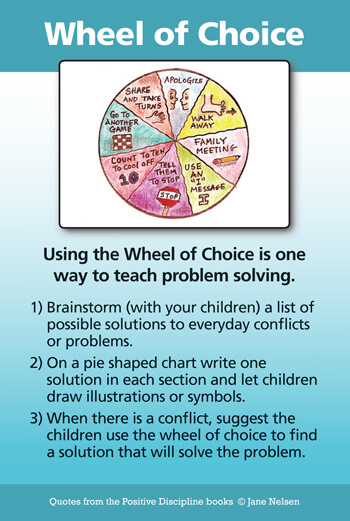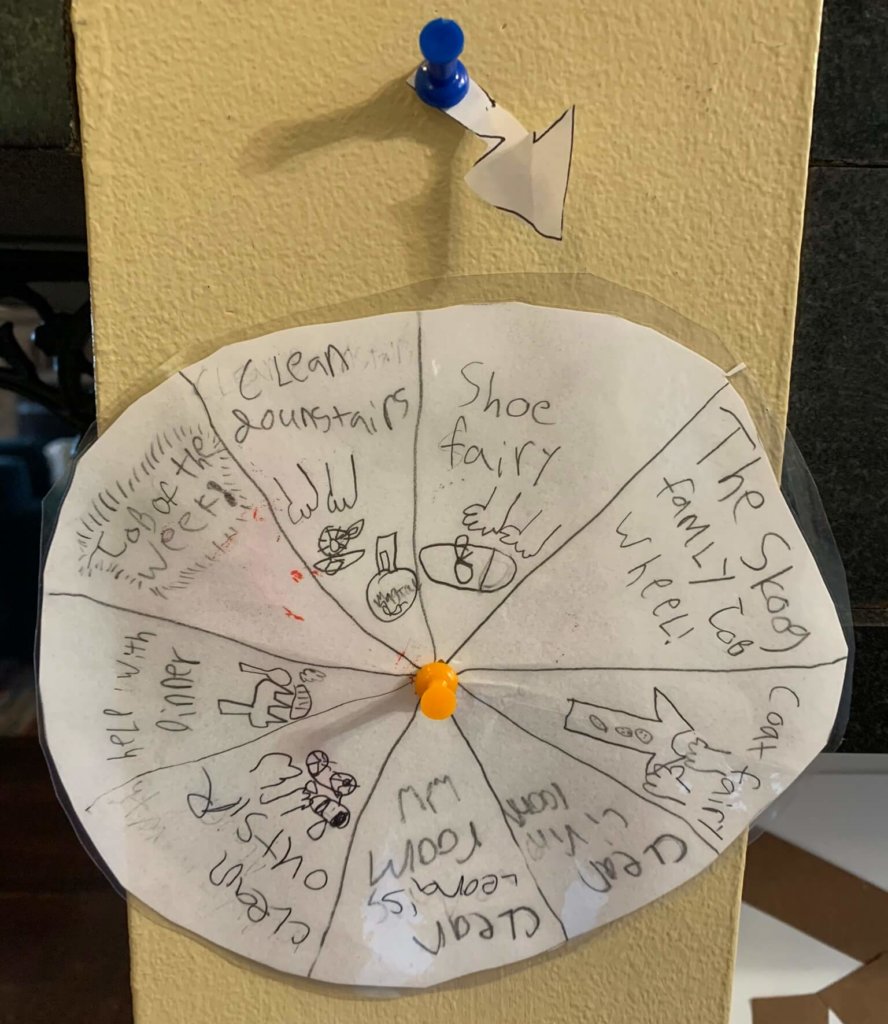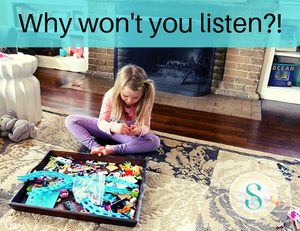5 Ways to Use the Wheel of Choice
The Positive Discipline tool Wheel of Choice not only sounds like a carnival game, it is also a way to find the fun, teach independence, and increase intrinsic motivation through choice. We can all use a little bridge to support us through transitions, and this is especially true for kids.
What is it?
A wheel of choice looks like a pie chart, with 6-8 pieces that have ideas or solutions for what to do in a given situation. A child can spin the wheel or the spinner, or simply look at the chart and pick the idea that works for them.

How do we make one?
Use a simple piece of paper or construction paper to draw a circle with 6-8 pizza or pie slices. Brainstorm ideas together, letting your child take the lead as much as possible and using curiosity questions. Write the idea in a few words, and also draw a simple picture or icon to highlight the idea. Then practice, role play, and take some time for training for each one.
Pro tip: Laminate, use an old board game spinner, or even take the “wheel” out of it and write ideas on popsicle sticks, rocks, or straws to pull out at random.
How young can I start this?
You can start as young as 18 months to 2 years old. The more visual for the little ones the better!
Get started
Here are 5 ideas to get you started, but remember to make it personal for YOUR family. The creation and brainstorming together is part of the important process to develop executive functioning and intrinsic motivation.
1. Daily contributions
As a part of their routine, kids can spin the wheel to see what their extra contribution to the household will be for the day. This is in addition to their responsibilities for themselves like clearing their place, brushing teeth, or cleaning up. Ideas include watering plants, mopping, taking care of pets, shoe/coat fairy (organizing and putting them away), hamper helper (laundry), or cleaning a communal room. Consider the contribution to be about as many minutes as their age, and less about it getting done to completion.
Set the timer! Age = Minutes

*Check out our video on Wheel of Choice for daily contributions
2. Solving problems
This can be super helpful for those sibling squabbles, especially when creating it and practicing the different solutions. Then when they come to you with a problem you can ask, “what have you tried?” and look at the wheel together. Ideas can include a bug and wish, taking turns, making a deal, making a trade, finding a win-win, taking a break, flipping a coin, etc.
3. Calming down
In the moment, it is tricky for kids to be rational enough to choose an option or spin the wheel when they are super dysregulated and in the middle of a meltdown, so this is most helpful to use as a teaching and practice tool. Add it to their daily routine, ideally 2-3 times a day for kids that really struggle, in order to practice healthy coping strategies and strengthen their neurological system. Ideas can include: ask for a hug, belly breathing (or choose their favorite animal and call it “lion” breath), read a feelings book, jump on the trampoline or some other physical activity, go to my special spot, braindance (any movement that has them cross their midline) or get wrapped up in a blanket.
4. Family fun
This can help speed up the process at the end of your family meeting. These are ideas that you all agree on and can choose from when you plan your special time together during the next week. Ideas can include going on a walk, hike, or bike ride, playing a board or card game, baking or cooking, flying a kite, or special movie night. Get creative!
5. “I’m done.”
Teachers are pros at this. In most classrooms, you will see a visual list of things students can do when they are finished with independent work. This is helpful at home too now that we are all managing different levels of sharing space and homeschooling. Have an important call or meeting? This can be a special wheel of choice that they can spin to ensure you get that much needed uninterrupted time. Ideas should include special things they can do ONLY during this time and that can be played independently, like that bin of My Little Ponies, exploring the shoebox of costume jewelry, audiobooks, or FaceTime with a grandparent (free babysitting!).
Want help in creating your child’s calm down corner? Consider Generation Mindful’s Time-In Toolkit
This ToolKit is a step-by-step approach that supports YOUR mindset towards teaching and modeling healthy social emotional skills for and with kids, using preventative and responsive (strengths-based) practices instead of punitive or reactionary methods. GENM tools make the learning tangible, fun, and child-led- this is so important to cultivate intrinsic motivation: kids learn through relationship, autonomy, AND fun. When kids want to use their Time-In space all on their own, they are building that intrinsic motivation and skills that will last them a lifetime.
*Buy your Time-in Toolkit here.
*AS AN AFFILIATE, WE MAY RECEIVE COMPENSATION FROM GENERATION MINDFUL IF YOU PURCHASE PRODUCTS THROUGH THE LINK ABOVE. We only partner with people and companies that align with our mission and we wholeheartedly endorse Generation Mindful- tried, vetted and tested with our own kids!





Comments